Phacellophora camtschatica, known as the fried egg jellyfish or egg-yolk jellyfish, is a very large jellyfish, with a bell up to 60 cm (2 ft) in diameter and sixteen clusters of up to a few dozen tentacles, each up to 6 meters (20 ft) long. This cool-water species can be found in many parts of the world's oceans.
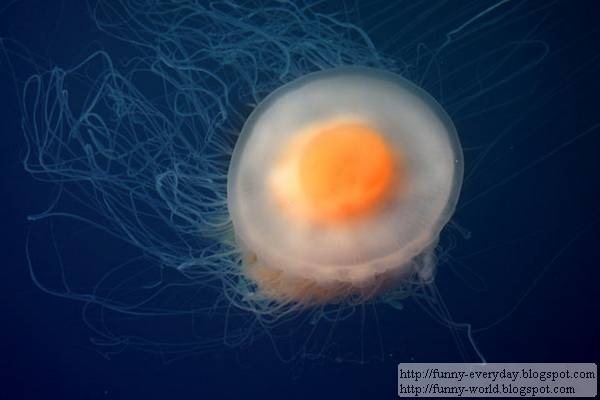
It feeds mostly on smaller jellyfish and other gelatinous zooplankton, which become ensnared in the tentacles (Strand & Hamner, 1988). Because the sting of this jellyfish is so weak, many small crustaceans, including larval crabs (Cancer gracilis) and Amphipoda, regularly ride on its bell and even steal food from its oral arms and tentacles (Towanda & Thuesen, 2006).
The life cycle of this jellyfish is well known (Widmer 2006), because it is kept in culture at the Monterey Bay Aquarium. It alternates between a benthic stage that is attached to rocks and piers that reproduces asexually and the planktonic stage that reproduces sexually in the water column; there are both males and females in the plankton.
A smaller jellyfish, Cotylorhiza tuberculata, typically found in warmer water, particularly in the Mediterranean Sea, is also popularly called a fried egg jellyfish.(Text from Wikipedia)
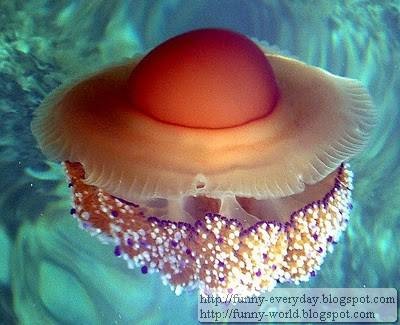
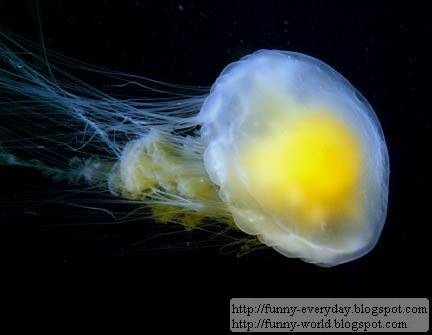

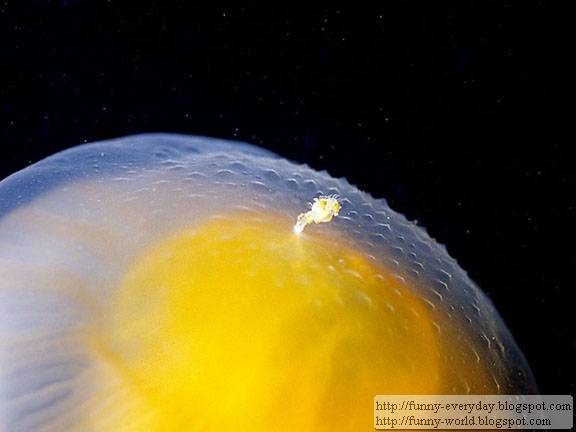
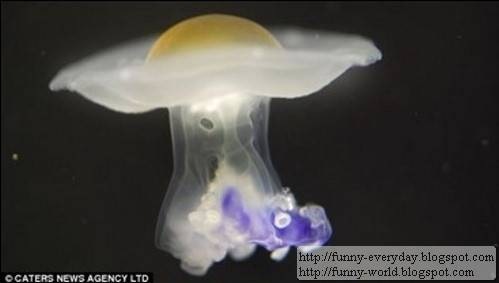
No comments:
Post a Comment